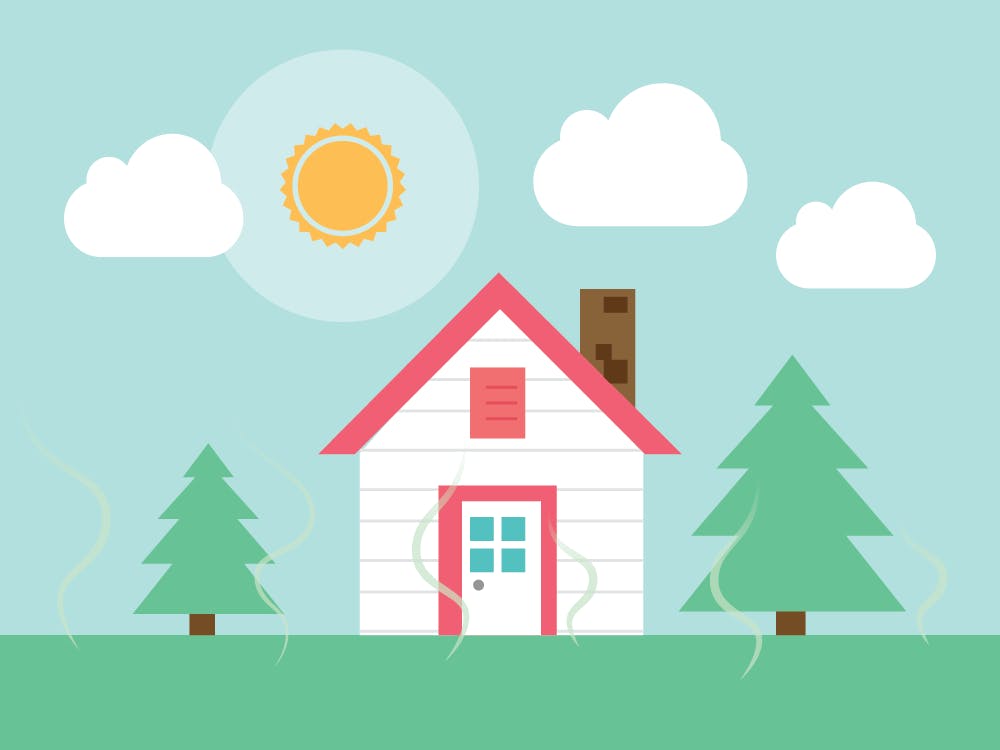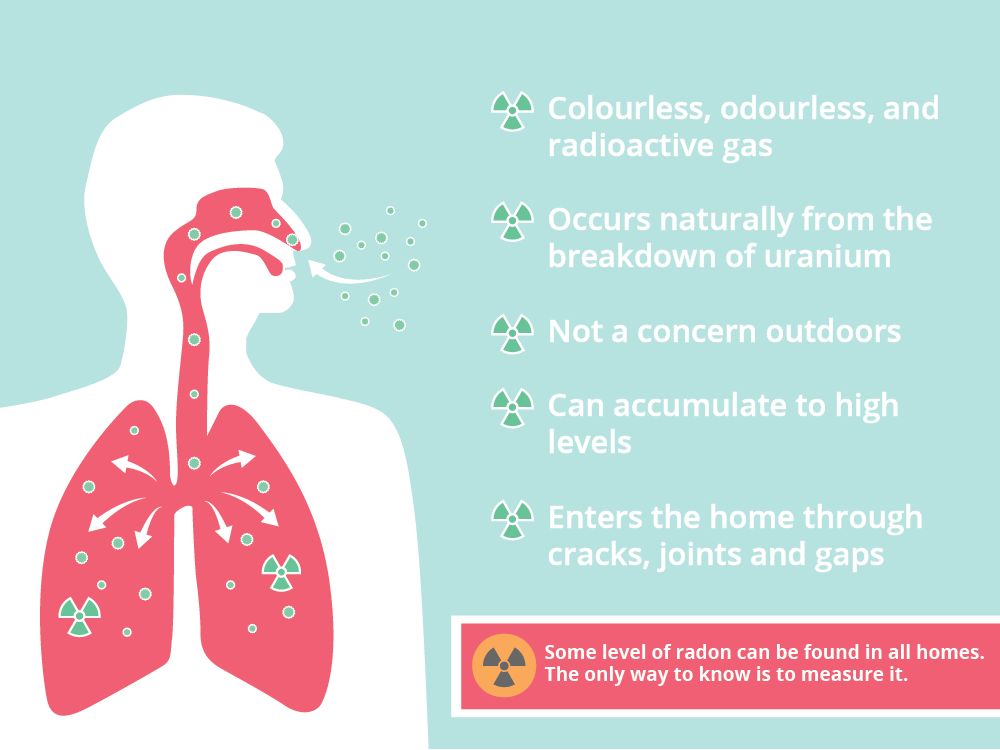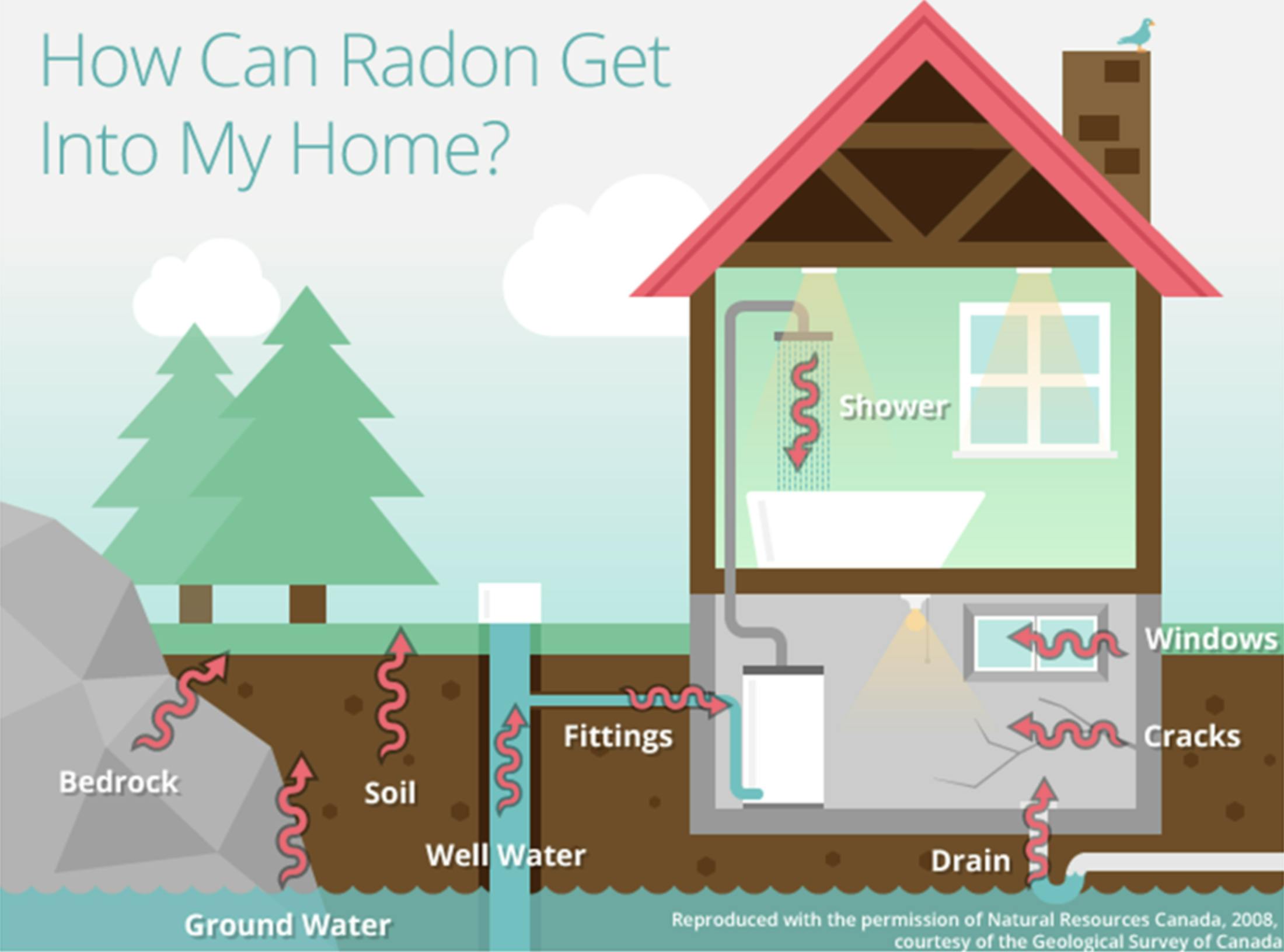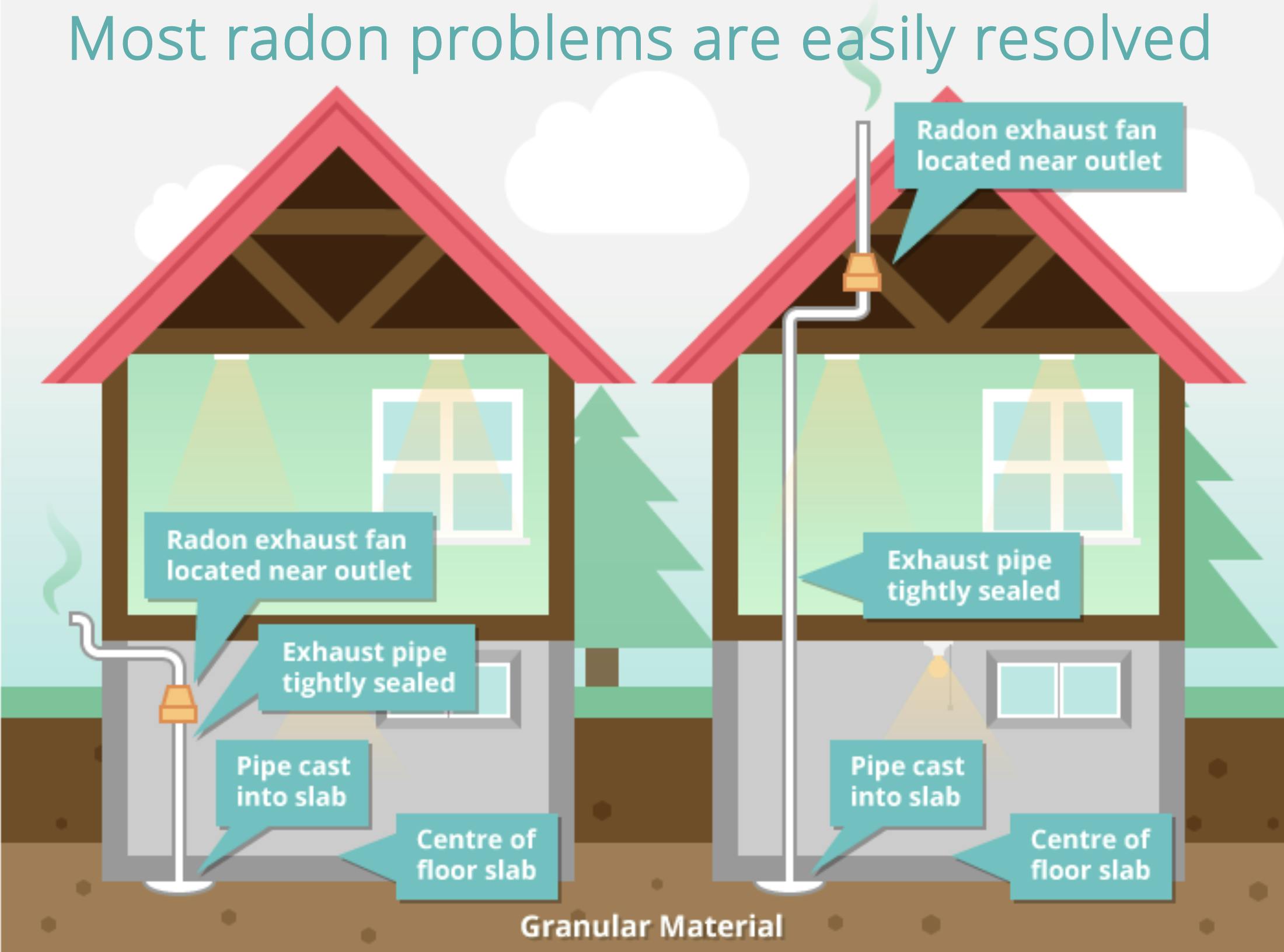
What is radon?
Radon is an invisible radioactive gas produced as the result of the breakdown of uranium in the ground. Radon gas has been identified as a significant indoor air health risk by Health Canada. All homes have some level of radon in them, radon levels vary significantly across Canada.
This page features essential radon-related knowledge and should help you take action.
Take Action - Test
Outdoors, radon gas cannot build up to health-hazardous concentrations. But, the opposite is true in an enclosed space like a home. Radon can enter a home in a variety of ways, potentially building up to dangerous levels.
All homes have some level of radon within them - but the question is, how much? The only way to know is to test your home. To test you have two options you can purchase a do-it-yourself test kit or hire a certified professional. Either way, you must do a long term test for 3 months to get an accurate measure of your annual average radon level.
Order a radon test kitTake Action - Reduce
If a home is found to have a high radon level (greater than 200 Bq/m3 as per Health Canada’s guideline), it is important to take action and have a mitigation system installed by a certified professional. Techniques to lower radon levels are effective and can save lives. A radon mitigation system can be installed in less than a day and in most homes will reduce the radon level by more than 80% for about the same cost as other common home repairs such as replacing the furnace or air conditioner.
Find a certified radon mitigation professional



